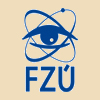Proceedings
Instructions for Authors
Accepted papers will be published in
Journal CERAMICS-SILIKÁTY,
which covers the following ranges of material science:
- Chemistry and physics of ceramics and glasses
- Theoretical principles of their engineering including computing methods
- Advanced technologies in the production of starting materials, glasses and ceramics
- Properties and applications of modern materials
- Special analytical procedures
- Engineering ceramic including composites
- Glass and ceramics for electronics and optoelectronics
- High temperature superconducting materials
- Materials based on cement or other inorganic binders
- Materials for biological application
- Advanced inorganic glasses with special properties
- Fibrous materials Coatings and films based on inorganic non-metallic materials
MANUSCRIPT SUBMISSION
Submitted manuscripts should bring original results of scientific value regarding materials synthesis or processing, characterization, physical and chemical properties, application, or practically motivated modeling of these aspects. Reviews and theoretical papers with practical impact may be considered as well. However, reports with purely technological impact (e.g. laboratory reports or company R&D results with secret material composition) will not be considered.
Authors should submit manuscript electronically as Microsoft Word file to the
Organizing Committee:
dms@fzu.cz.
Please, use this
template file.
Rewrite this sample copy paper but do not change any settings.
The submitted contribution must be in English.
Use the Times new Roman 12 pt font for the main text.
Minimum length of your
contribution is 3 pages, maximum length is 6 pages (text
apart from figures) using line spacing 1.
Only 10 selected papers will be published.
OPEN ACCESS
Published articles are freely accessible and can be used for non-commercial purposes. Commercial use is not permitted unless explicitly agreed in writing by the editorial of Ceramics-Silikáty.
PUBLISHING ETHICS
The journal Ceramics-Silikáty requires authors to follow the Ethics in Publishing Policies common in other impacted materials science journals. In particular, plagiarism and duplicate submission is not acceptable. When submitting a paper to Ceramics-Silikáty, authors are expected to agree with this guideline.
COFLICT OF INTERERST
The corresponding author, on behalf of all co-authors, is requested to disclose any conflict of interest that could inappropriately influence the submitted work. All funding sources have to be mentioned in the Acknowledgement.
TYPES OF ARTICLES
Original papers and Review papers are published. Both contributions should contain an Abstract and a Conclusions section which, particularly in the case of theoretical papers, translates the results into terms accessible to non-expert readers.
MANUSCRIPT FORM
Abstract: The abstract should not exceed 200 words and should not be subdivided into paragraphs. It should contain the most important, essential findings of the paper in a condensed form. Do not use undefined abbreviations and do not cite literature references in the abstract.Keywords: Authors should propose 3 to 8 keywords suitable for literature databases. Keywords should be preferentially chosen in such a way that redundancy with the title words is avoided. For example, if the title contains the word "porosity", the keywords need not contain this word, but could contain the word "porous".
Abbreviations: All abbreviations should be explained upon first appearance in the text and, once introduced, should be consequently used throughout the text.
Text: The manuscript text, including tables and figures, should be submitted with the usual line spacing 1 (not 2) as a single editable MS Word file with page numbers centered on the bottom of each page.
Figures and Tables should be included in the editable MS Word manuscript file and placed next to the relevant text in the manuscript, rather than at the bottom or the top of the file. Tables should be submitted as editable text tables, not as images. Preferred file types for figures are TIFF (JPG), EPS (PDF) and MS Office files. The minimal TIFF resolution is 300 dpi. All figures and graphs should be prepared for black and white reproduction, although color reproduction is possible in the electronic version. Please choose symbols and line styles that are clearly distinguishable. For example, prefer full, dashed and dotted lines to lines in different gray tones.
Acknowledgements should be situated in a separate section at the end of the article before the References.
References should be marked in the text with the numbers in square brackets, e.g. [1] or McAdams [2]. If the reference is assigned with DOI (Digital Object Identifier), include it at the end of the record. Please use the following examples to format references.
- Articles: [3] Zavadil J., Ivanova Z.G. Kostka P., Hamzaoui M., Soltani M.T. (2014): Photoluminescence study of Er-doped zinc–sodium–antimonite glasses. Journal of Alloys and Compounds, 611, 111-116. doi:10.1016/j.jallcom.2014.05.102
- Books: [4] Rahaman M.N. (2003). Ceramic processing and sintering. 2nd ed. CRC Press.
- Chapter in Edited Books: [5] Moy E., David R., Neumann A. (2010). Theoretical approaches for estimating solid–liquid interfacial tensions, in: Zuo Y. (Ed.): Applied Surface Thermodynamics. CRC Press. pp. 555-597. doi:10.1201/EBK0849396878-11
COPYRIGHT ASSIGNMENT
Upon acceptance of an article, the corresponding author will be asked in behalf of all authors to sign "Journal Publishing Agreement and Copyright Assignment" form.

